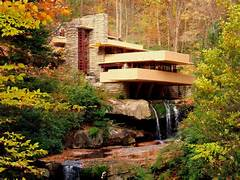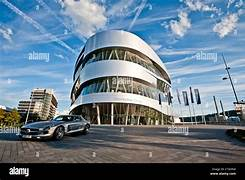Modern Marvels: A Comparative Study of Architecture Across Countries
Architecture is often described as the silent expression of a culture's identity, history, and vision for the future. From ancient wonders to cutting-edge designs, the evolution of architectural practices reveals the ambitions, technologies, and societal priorities of nations. In this comparative study of architecture, we will explore various countries that stand out in architectural innovation, preservation, and influence.
Tier 1: The Pioneers of Modern Architecture
1. United States
The United States has long been a playground for architectural experimentation. It’s home to some of the world's most iconic skyscrapers and modernist designs. American cities like New York and Chicago pioneered the art of vertical living with marvels such as the Empire State Building and the Sears Tower (now Willis Tower). Frank Lloyd Wright’s Fallingwater and the Guggenheim Museum showcase America's balance between organic architecture and modern functionality. The U.S. continues to push boundaries, especially with tech-centric designs like the Apple Park in Cupertino, California.
Empire State Building2. Germany
Germany is renowned for its Bauhaus movement, which revolutionized architecture by integrating functionality with design. Today, cities like Berlin and Munich boast a mix of historical structures and `. Landmarks like The Reichstag with its modern glass dome by Norman Foster, and the Vitra Campus reflect Germany’s emphasis on blending history with modernity. Germany's contribution to sustainable architecture is noteworthy, with buildings like the Mercedes-Benz Museum in Stuttgart demonstrating how form and function can achieve aesthetic and environmental harmony.
3. Japan
Japan has maintained a unique architectural identity, blending traditional elements with ultramodern designs. From ancient temples like the Kiyomizu-dera to ultra-modern marvels like the Tokyo Skytree, Japan excels at architectural diversity. Notable architects like Tadao Ando and Shigeru Ban are renowned for their minimalist designs that emphasize light, space, and nature. Japan’s approach to architecture deeply values sustainability and innovation, reflected in structures like The Nakagin Capsule Tower and Ban's use of recyclable materials.
Tier 2: Rising Stars of Architecture
4. China
China’s architecture is a reflection of its rapid growth and cultural heritage. Beijing's Forbidden City stands as a symbol of the country’s rich history, while modern marvels like the CCTV Headquarters in Beijing and the Shanghai Tower showcase China's ambition to dominate the architectural world. The 2008 Beijing Olympics highlighted China's modern architectural prowess, particularly with the Bird’s Nest Stadium and the Water Cube. Furthermore, China’s massive urbanization has led to innovative designs that prioritize energy efficiency and futuristic aesthetics.
5. United Arab Emirates
The UAE, specifically Dubai and Abu Dhabi, has emerged as a hub for architectural ingenuity. The Burj Khalifa in Dubai, the tallest building in the world, is the crown jewel of this architectural revolution. The Burj Al Arab, with its sail-like design, and the Louvre Abu Dhabi push the limits of contemporary architecture. The UAE's desert Architectures poses a unique challenge, and architects here have embraced sustainable practices, seen in the eco-friendly city of Masdar. The combination of luxury, innovation, and environmental consciousness makes UAE architecture stand out on the global stage.
6. India
India is known for its diverse architectural styles, shaped by its history, religions, and modern aspirations. The Taj Mahal is one of the most recognized symbols of India's architectural heritage, but modern developments like the Infosys Campus in Mysore, and the World One Tower in Mumbai represent India’s push towards integrating technology with design. Cities like Bangalore are becoming tech hubs, leading to more sustainable and innovative architecture. India's architecture is also evolving towards eco-friendly practices, with projects like Suzlon One Earth, which is a fully LEED Platinum-certified green building.
Tier 3: Architectural Giants of the Past
7. Italy
Italy, the birthplace of the Renaissance, has profoundly influenced global architecture. From the grandeur of Rome's Colosseum and St. Peter’s Basilica to the artistic beauty of Florence's Duomo and Venice's canals, Italian architecture is a living testament to centuries of innovation. While Italy’s modern architecture is more restrained compared to its golden age, its respect for heritage preservation remains strong. Modern structures like Zaha Hadid’s MAXXI Museum in Rome show that Italy is capable of modern innovation while honoring its historical roots.8. EgyptHome to one of the world’s most ancient architectural feats, the Pyramids of Giza, Egypt is the land of monumental structures that have stood the test of time. While its modern architectural efforts are not as globally renowned as other nations, its contribution to history cannot be understated. Cairo’s Library of Alexandria and Baron Empain Palace highlight Egypt’s respect for architectural innovation while preserving cultural identity. Modern projects, like the planned New Administrative Capital, showcase Egypt’s aim to reestablish itself as a center for architectural wonder.
9. Greece
Greece is synonymous with classical architecture, known for its majestic columns and grand temples. Structures like the Parthenon in Athens have inspired countless buildings across the world, particularly in neoclassical designs. Though Greece’s modern architecture is relatively understated, it still boasts innovative projects like the Acropolis Museum and Stavros Niarchos Foundation Cultural Center. The country’s balance between preserving classical heritage and embracing contemporary design speaks to its rich architectural tradition.
Conclusion:
The Global Architectural NarrativeThe world’s architectural landscape is ever-evolving, driven by technology, culture, and sustainability. Countries like the United States, Germany, and Japan are leaders in modern design, blending technology and creativity. Rising stars like China, the UAE, and India are pushing the limits with bold, futuristic projects, while ancient giants like Italy, Egypt, and Greece continue to inspire and preserve their legacy.Architecture, more than just buildings, serves as a testament to humanity's capacity for innovation, beauty, and functionality. Each country, through its architectural marvels, tells a unique story—of its past, present, and future.If you want to focus on specific aspects like sustainability, or iconic architects, let me know!




















![Terry Farrell [ British architect]](https://blogger.googleusercontent.com/img/b/R29vZ2xl/AVvXsEgF5Bc7-F6oyGHwVlcJfUVoN9PAph8ZIAQAVTMDZ0oOX0kIENEGN84Arj8wxKS666_yV2hRHMM4zlJ5gCJFBA1ttvrGBPrCNY0tZWfcuPl0aolt_szKpBjWtbLYutI4ivHBLrzZkj-wEk_l_1paoEEVkgnzCt7yvpHoDkhm63TxHxL45GUgV2OZVkwLYkWG/w100/11e81b6d-862f-4a23-a2d0-950d22063de0.png)



0 Comments